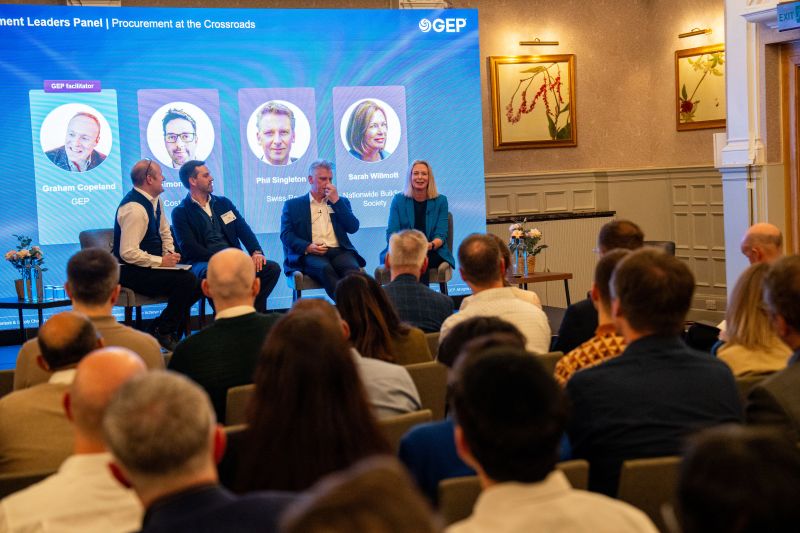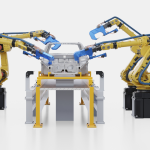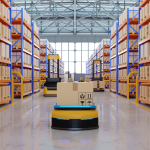In the grand setting of St. Ermin’s Hotel, a venue with a history shadowed by its past as a WWII espionage hub, GEP’s Europe Tour 2025 launched its London event with a promise to decode the enigmas of AI in procurement. The focus was clear: how AI is reshaping procurement and what leaders must do to stay ahead.
Procurement Needs a New Playbook
A key theme running through the evening was the urgency for procurement teams to move beyond traditional operating models. Procurement can no longer function in a silo or cycle through one-off transformation programs every few years. Instead, it must be embedded within business units, operating as a strategic function that actively drives outcomes rather than simply enforcing policy.
To do this, procurement must think and operate more like a startup—embracing agility, iterative problem-solving, and cross-functional collaboration. Instead of rigid, category-driven structures, forward-thinking organizations are shifting toward fluid, business-aligned teams that focus on outcomes rather than outdated procurement processes.
That means prioritizing real business challenges over rigid procurement cycles. Design thinking, data-driven decision-making, and continuous adaptation must replace slow-moving, compliance-heavy approaches. Procurement isn’t just about managing costs—it’s about driving innovation, anticipating market shifts, and helping businesses move faster and smarter.
The shift is clear: procurement is evolving from a compliance-driven, cost-focused discipline to one that shapes commercial decisions and strengthens enterprise agility. The question is: how quickly can organizations adapt?
Making AI Work for Procurement
When asked if they had a clear roadmap for AI, most procurement leaders in the room hesitated before raising their hands. The uncertainty was less about AI’s potential, and more about how to implement it effectively.
Many organizations dabble in AI—running small tests in isolated areas, adopting AI-powered tools without an overarching strategy. But as Vlad Brincoveanu of GEP made clear, AI only delivers real value when applied with intent.
The first step is getting the fundamentals right. AI is not a plug-and-play fix—it depends on high-quality data, strong stakeholder alignment, and a technology ecosystem that supports AI-driven decision-making. Without this foundation, AI adoption will lead to frustration, not transformation.
As Brincoveanu put it, “If your data isn’t clean, structured, and accessible, even the best AI tools will struggle to deliver results. Procurement leaders must get their foundations right before expecting AI to transform their function.”
A Roadmap for AI Integration
Brincoveanu laid out a structured approach to AI adoption, emphasizing the need for precision and a shift beyond experimentation.
AI success starts with assessing readiness. AI relies on structured, reliable data and a strong technology foundation. Leaders must ask: Are our systems capable of supporting AI? Do we have access to high-quality, real-time procurement data? Without this, even the most advanced algorithms will fail to deliver results.
Once the groundwork is set, organizations should prioritize AI in areas that deliver immediate value. Automating contract analysis, enhancing supplier risk predictions, and improving tail-spend visibility are strong starting points. These use cases provide measurable benefits without requiring a full-scale transformation.
However, too many organizations get stuck in pilot mode—testing AI in isolated areas without integrating it into broader workflows. AI must be embedded into procurement processes, not treated as an add-on. The real value comes when AI is woven into daily decision-making, rather than confined to isolated trials.
Beyond technology, procurement teams need the right skills to leverage AI effectively. This means upskilling existing staff, hiring AI specialists, and ensuring collaboration with IT, finance, and operations. AI adoption isn’t just about deploying new tools—it’s about making sure the people using them can extract meaningful value.
Most importantly, AI should enhance procurement’s role, not replace it. The best AI implementations don’t just reduce manual workloads; they empower teams with real-time insights to anticipate risks, optimize supplier relationships, and drive broader business objectives. AI isn’t here to take procurement out of the picture—it’s here to make it smarter, faster, and more strategic.
Brincoveanu emphasized that procurement leaders must stop viewing AI as just automation—it’s amplification. AI isn’t here to replace procurement teams but to enhance their ability to anticipate risks, optimize supply chains, and make smarter, faster decisions.
However, AI is only as powerful as the team behind it. Procurement leaders need data experts, technology specialists, and strategic thinkers who can turn AI-driven insights into action. This is where solutions like GEP’s Quantum come in—embedding AI directly into procurement systems so teams can access intelligent automation, predictive insights, and real-time analytics without needing deep AI expertise.
The key takeaway? AI adoption requires leadership. Procurement teams waiting for the “perfect” AI roadmap will fall behind. Those willing to experiment, learn, and push AI adoption forward will set the pace for the entire industry.
Brincoveanu’s message was clear: be the voice of value, build the right team, and act decisively. The procurement leaders who embrace AI today will define the future of the function. Those who hesitate risk being left behind.
Procurement as a Growth Driver, Not Just a Cost Cutter
A major theme of the evening was how procurement is shifting beyond cost savings and becoming a revenue driver.
Traditionally, procurement’s role has been seen as negotiating the best deal and minimizing expenses. But as the panel discussion made clear, procurement can directly impact revenue, growth, and market positioning.
Sarah Willmott, Chief Procurement Officer at Nationwide Building Society, shared a powerful example of this shift. Her team worked on a procurement-led deal with Visa that not only reduced costs but unlocked new investment opportunities, allowing Nationwide to co-develop its card strategy.
“We’re no longer just negotiating supplier contracts—we’re shaping commercial strategies,” Willmott explained.
This marks a fundamental change in how businesses perceive procurement. No longer just a cost-control function, procurement is a strategic force that can drive innovation, supplier collaboration, and new revenue streams.
Organizations that embrace this shift will position procurement as a core part of business growth. Those that don’t will struggle to keep up with the companies that do.
The Future of Procurement is Being Defined Now
As GEP’s London event made clear, procurement is at a turning point. To stay competitive, leaders must rethink how their teams operate.
AI will be a game-changer, but only for those who implement it with clear intent. The most successful organizations will deploy AI to solve real problems—enhancing decision-making, automating high-friction processes, and aligning AI initiatives with broader business goals.
Beyond technology, procurement itself must evolve. The leaders who integrate procurement with commercial strategy—leveraging supplier-led innovation, revenue-generating partnerships, and data-driven decision-making—will shape the function’s future.
The message for procurement leaders is clear: wait and react, or take the lead and define what comes next.
Join the GEP Europe Tour 2025
If you missed the Amsterdam and London events, there’s still time to be part of the GEP Europe Tour 2025. The journey continues across major European cities, with upcoming stops in:
- Munich – February 11, 2025
- Paris – March 5, 2025
- Geneva – March 6, 2025
- Stockholm – March 12, 2025
For more details and to register, visit GEP Europe Tour 2025.







